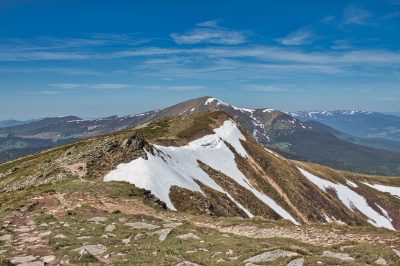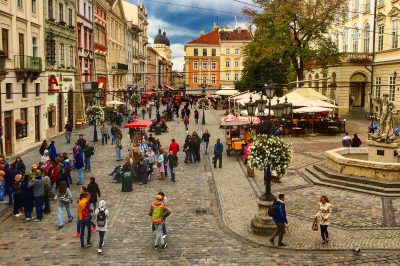Galicia was a border region for several centuries and was occupied, conquered and administered by many ruling houses. The region around the city of Lviv was for a long time in the hands of Polish nobles. Until today, some breathtaking castles have been preserved, which you can easily visit on a day trip from Lviv. The most popular route is the so-called Golden Horseshoe, an ensemble of three picturesque castles, each with a different character, yet closely associated with the legendary Polish King Jan III Sobieski and his family. They can be perfectly combined into a day tour. Come along to Olesko, Pidhirtsi and Zolochiv to discover the most beautiful castles around Lviv.
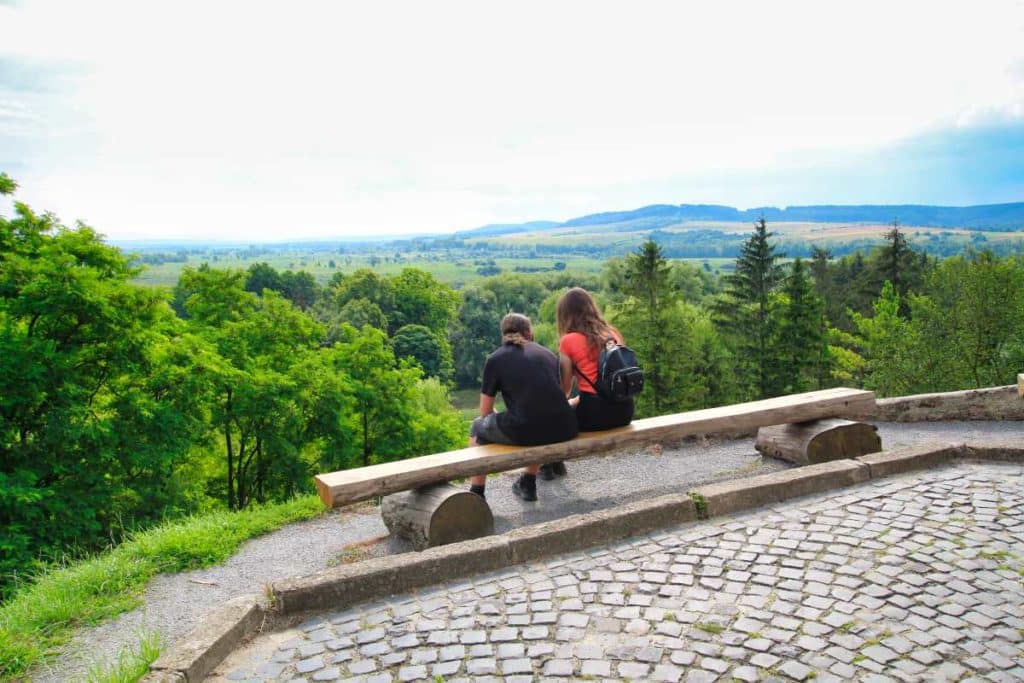
The Golden Horseshoe
Western Ukraine was long part of the Polish-Lithuanian Kingdom and was later incorporated into Austria through the Polish Partitions. The Polish heritage in the region, where mainly Poles, Jews and Ukrainians lived, is still very present today. Although only a few Poles live here today, the architectural heritage has survived all times and especially the Golden Horseshoe offers perfect conditions to learn about the history of the region. The three castles located here tell a lot about their former owners and their times and give you an impression of the rich history of the region.
Jan III Sobieski – A King Who Wrote History
Rural western Ukraine was controlled for centuries by Polish magnate families. One of them was the Sobieski clan. A man who would decisively shape the destiny of Europe was born into this family. Jan III Sobieski was born in 1629 at Olesko Castle to Jakub Sobieski, castellan of Kraków, and Sofia-Teofila of the Daniłowicz house.

After his studies in Kraków, he was active as a Polish ambassador in Turkey and later showed his skill as a military strategist in several battles. Thus, he was able to rise to the position of Grand Hetman of the Polish Crown, which was tantamount to the supreme command of the Polish armed forces. After defeating an Ottoman army in the Ottoman-Polish War (1672–1676), he was elected Polish-Lithuanian king in 1674.
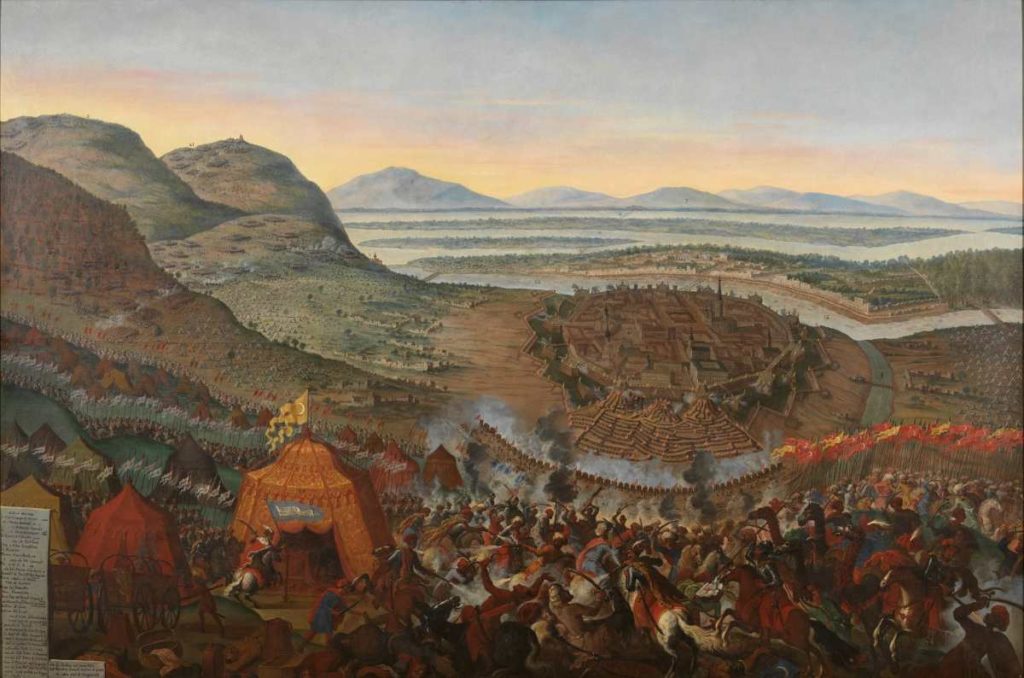
Sobieski is best known for the Battle of the Kahlenberg in 1683 (also known as the Battle of Vienna), when he defeated the overwhelming Ottoman army with a relief army as leader of the Catholic League (consisting of Polish, Imperial Austrian, Bavarian, Saxon, Badenian and Württembergian soldiers). In this way, he probably ensured that the Habsburg Empire did not fall. He had once again demonstrated his enormous military prowess. In several more battles and skirmishes, the Ottoman army was pushed back further and further and Hungary came under Austrian control.
The following years were much quieter for Sobieski. The king, who had an affinity for languages, excelled as a patron of the arts and had one of the most beautiful baroque palaces in Europe built, the Wilanów Palace near Warsaw. Sobieski died there in 1696 at the age of 66. He was succeeded on the Polish throne by Augustus the Strong, Elector of Saxony, a no less dazzling ruler.
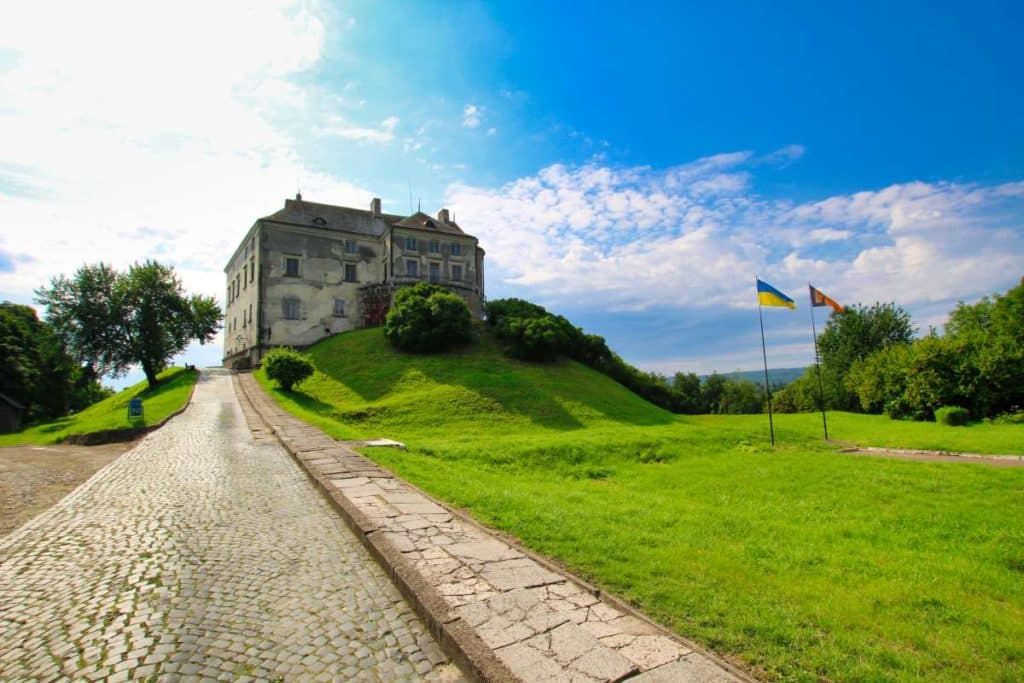
Olesko Castle
On a hill on the border of Galicia with Volhynia rises a massive castle, the beginnings of which date back to the 13th and 14th centuries. It was here that Jan III Sobieski once saw the light of day. The King of Poland-Lithuania never forgot his roots and bought the castle, later it came into the possession of the Rzewuski family, who gave it its present appearance in the 17th century. In the 19th century, the castle increasingly fell into disrepair. It was not until Ukraine became part of the Soviet Union that the estate was restored. Therefore, most of the exhibits on display come from other castles and chateaux in Galicia and were merely brought together here.
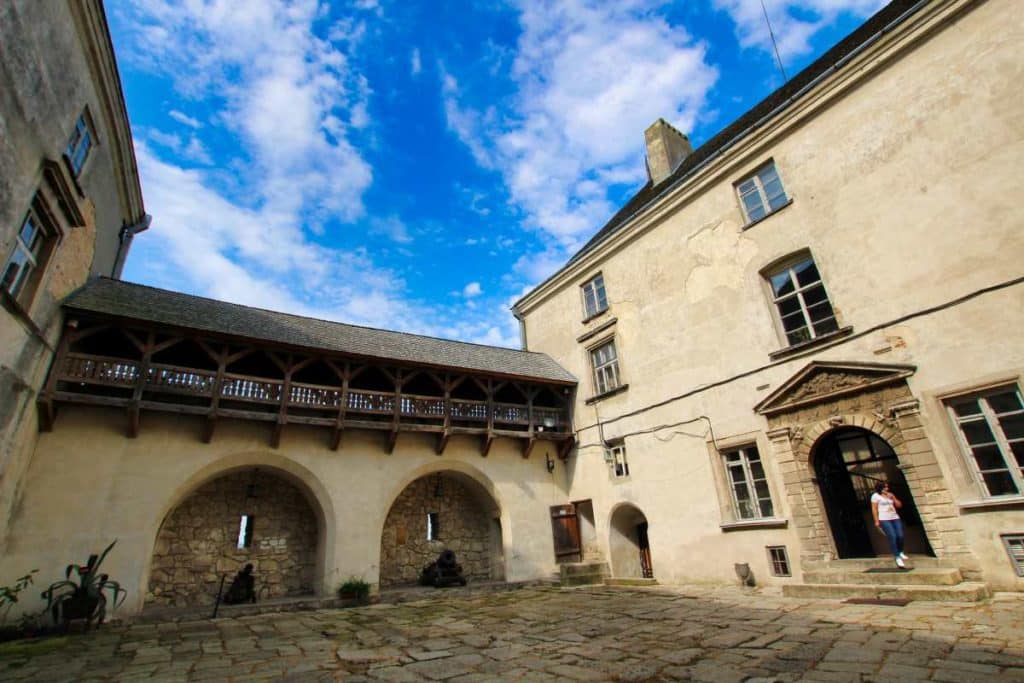
Through Flemish tapestries, furniture and paintings, you can get an idea of the life of a 17th-century Polish magnate family. There are also numerous icons to admire, including a particularly valuable work from the 16th century, which eerily depicts the Last Judgment.
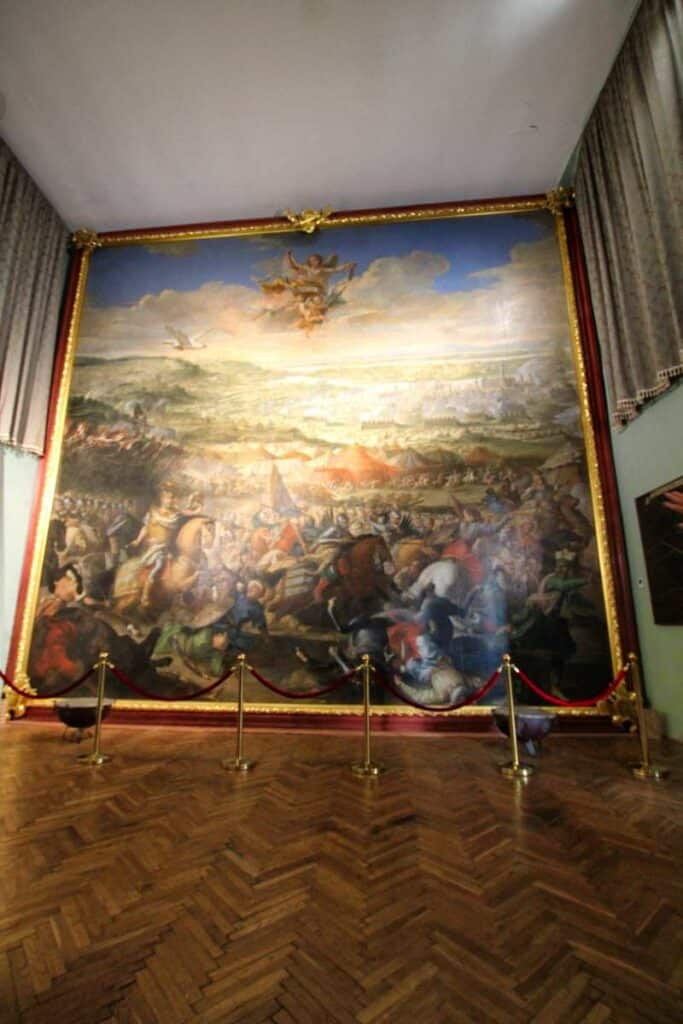
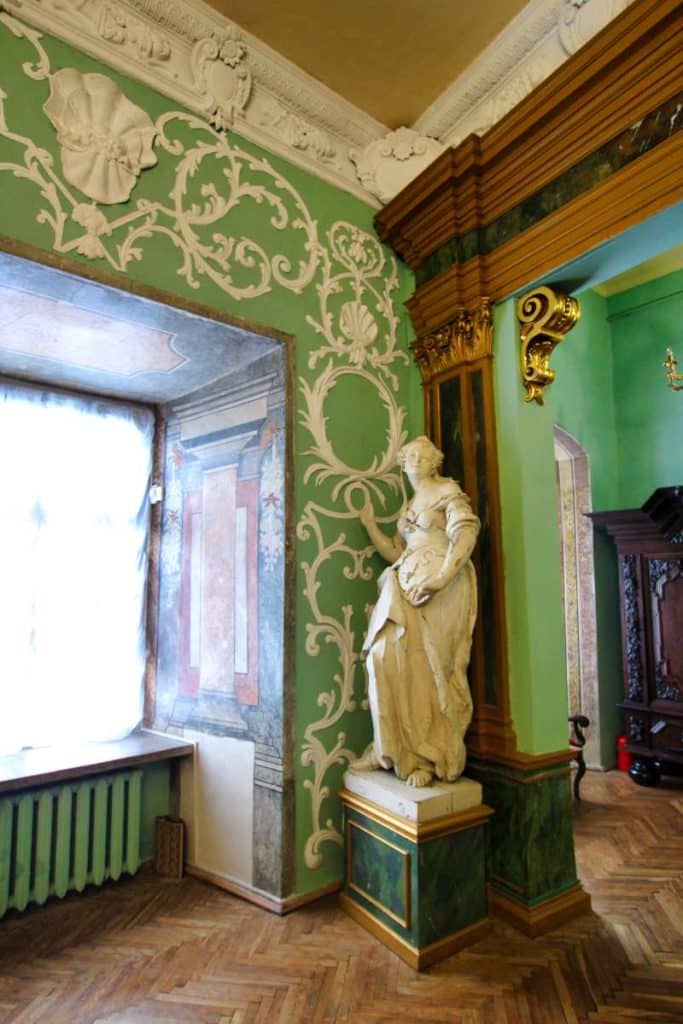
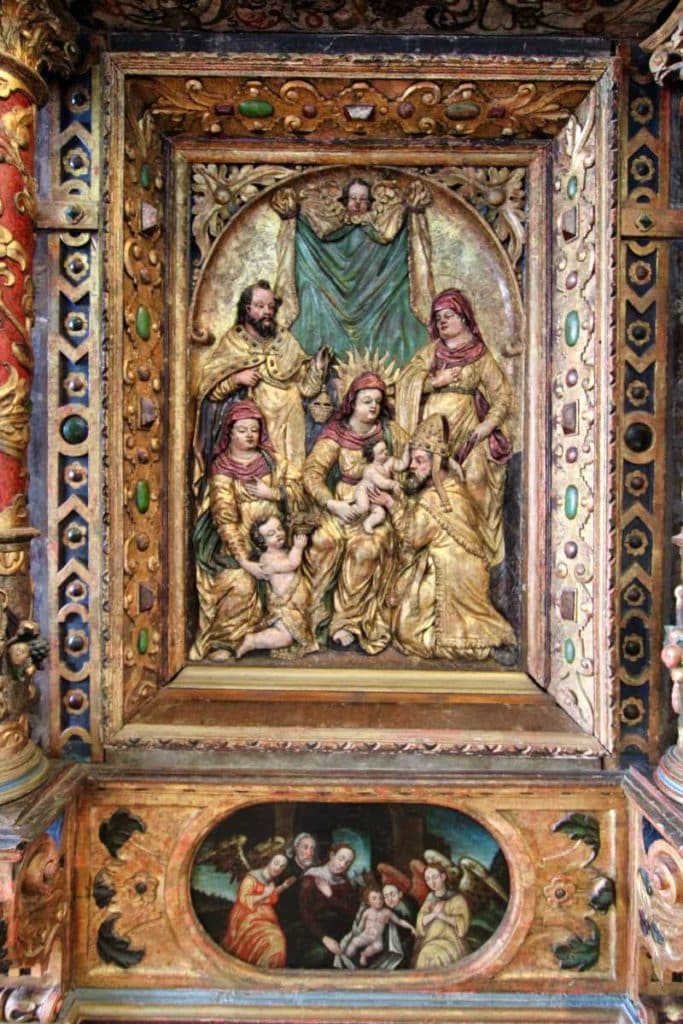
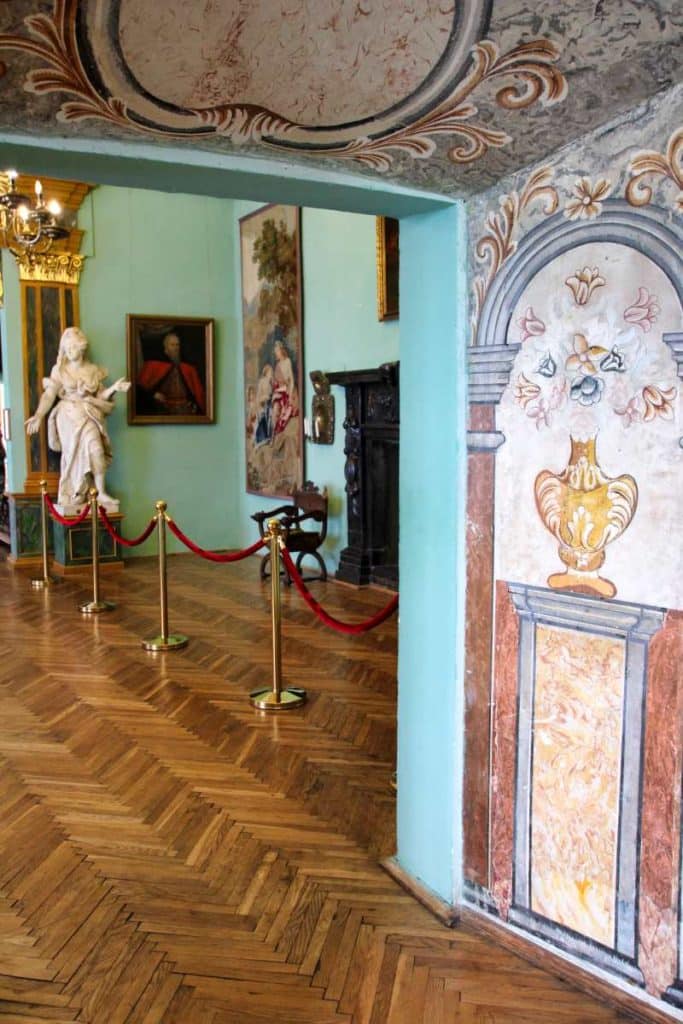
The castle is also famous for a huge battle painting depicting Sobieski’s success at the Battle of Vienna. You can also visit the underground, after which you can take a walk and stop at the rustic castle restaurant Hrydnyzja.
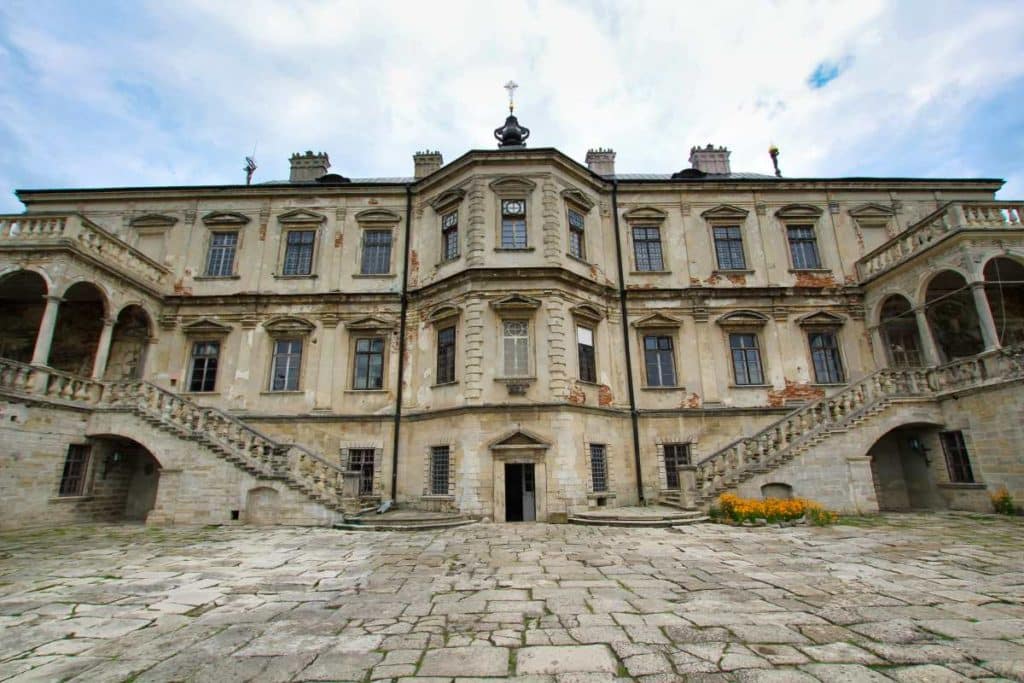
Pidhirtsi Castle
In the past, Pidhirtsi was known as the “Galician Versailles”. Even at present, the castle, which often serves as a film set and is also known as Sanguszko Castle, is one of the most picturesque places in the region. Nestled in a large parkland, it was built in the 17th century by Italian and French master builders on the foundation of an old bastion. The commander-in-chief of the Polish-Lithuanian army, Stanisław Koniecpolski, acted as the builder, and his family later bequeathed the estate to the Sobieski family. Today, however, not much remains of the former splendor of the complex, wars and looting left strong traces on the castle. But it is precisely the enchanted, decaying exterior that makes the special charm of this complex.
In Soviet times, Pidhirtsi served as a tuberculosis hospital, but today you can at least get an impression of the former splendor of the complex from historical photos inside, and copies of famous paintings are also on display here. Due to the poor state of conservation, the castle is on the WMF’s list of the 100 most endangered cultural assets in the world.
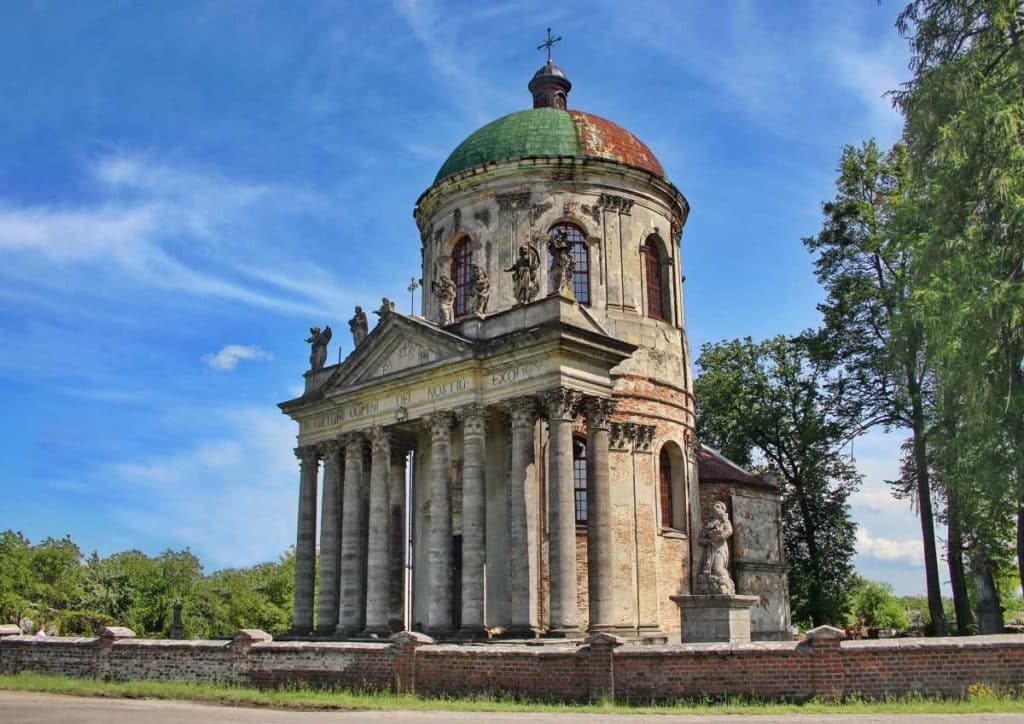
The surroundings of Pidhirtsi Castle
If you follow the avenue leading from the castle to the village of the same name, you will come to a wonderful 18th-century Greek Catholic church whose style is modeled on St. Peter’s Basilica in Rome. Also known as the Sunna Castle Chapel, it was once called Joseph’s Church and is now dedicated to Nicholas Czarnecki, among others. He was persecuted and imprisoned by the Soviet authorities and beatified by Pope John Paul II in 2001. Unfortunately, as you can see from the picture, the church dedicated to him is also in a poor state of conservation. The church once served as a castle chapel, and later as the parish church of the municipality. Inside, the baroque carvings and golden decorations are particularly impressive.
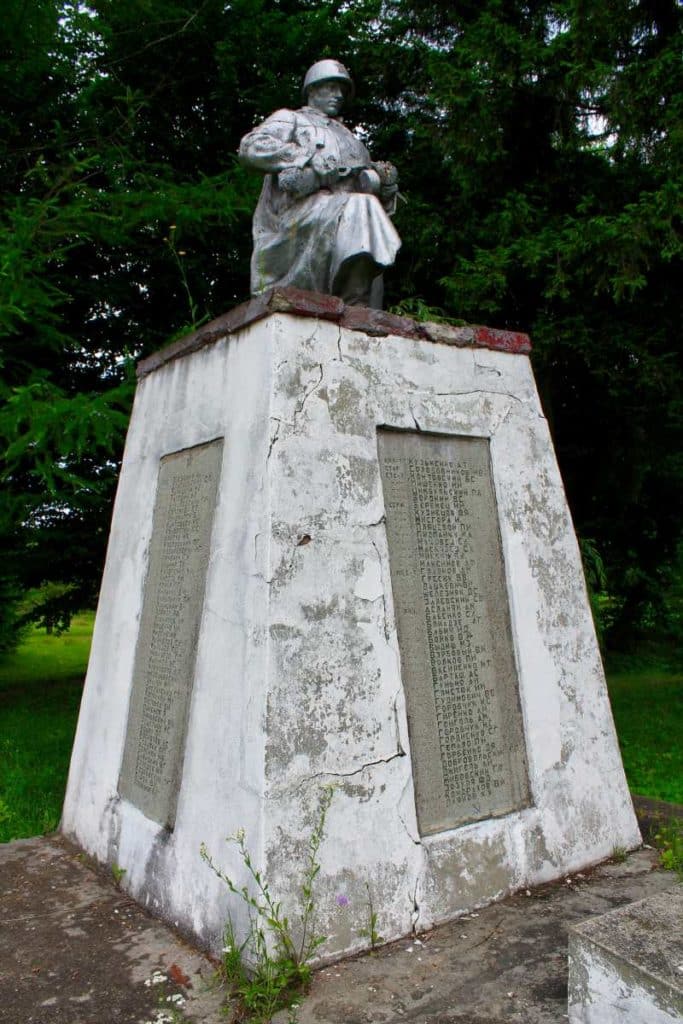
But you should also take a look at the park of the castle. Much of it is overgrown, but in some places exciting discoveries are possible. Among other things, there is a Soviet memorial commemorating the conquest of the place in World War II.
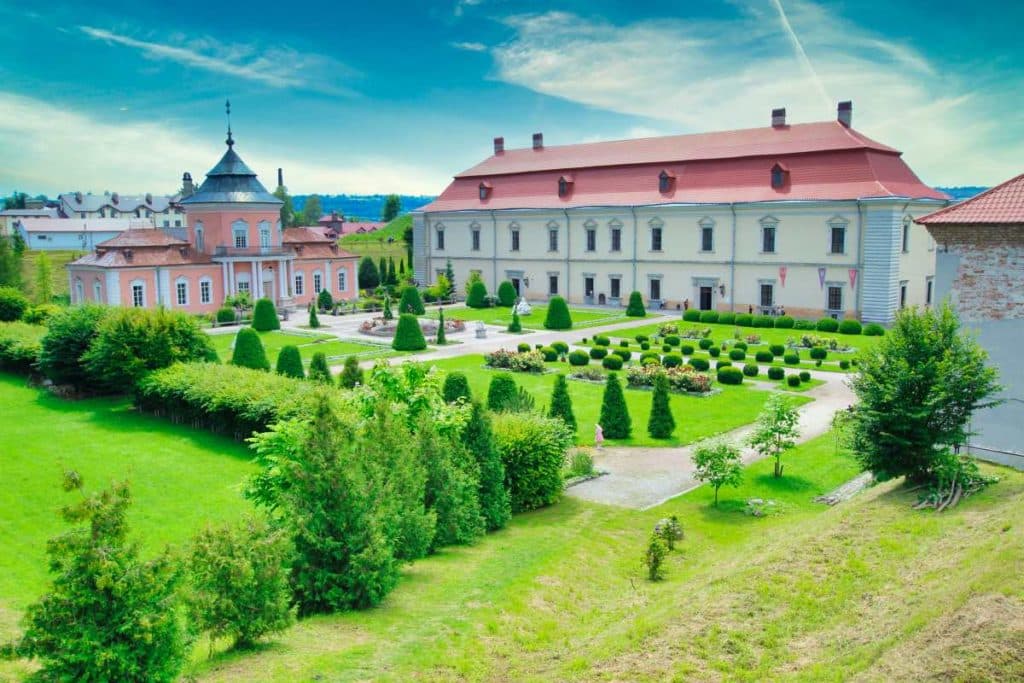
Zolochiv Castle
While the castles of Olesko and Pidhirtsi are surrounded by vast green spaces, Zolochiv Castle is nestled in the town of the same name. On a hill surrounded by four bastions rises a picturesque complex consisting of two palaces. However, the complex, which also belonged to the Sobieski family and later to the influential Radziwiłł magnate family, harbors a dark past. Even before the First World War, the area was used as a prison. When the Red Army took control of the region in 1939, the NKVD set up a prison here for political prisoners, who were murdered when the Wehrmacht approached in 1941. The German occupiers converted this facility into a concentration camp, and thousands of Jews were killed here.
However, you will hardly find anything of the terrible past of this place here. The Great Palace presents, among other things, archaeological finds from the region, odd “hunting trophies” and furniture from the early modern period. Especially beautiful, however, is the magnificent European Hall. However, its history as an NKVD prison is also thematized, leaving out the period of German occupation. Wonderful, however, is the monumental battle painting. The 8.30-meter-high painting depicts a significant victory of Jan III Sobieski against the Ottomans in what is now Slovakia and is very reminiscent of the painting in the Olesko Palace. The underground of the palace presents, among other things, archaeological finds from Lviv.
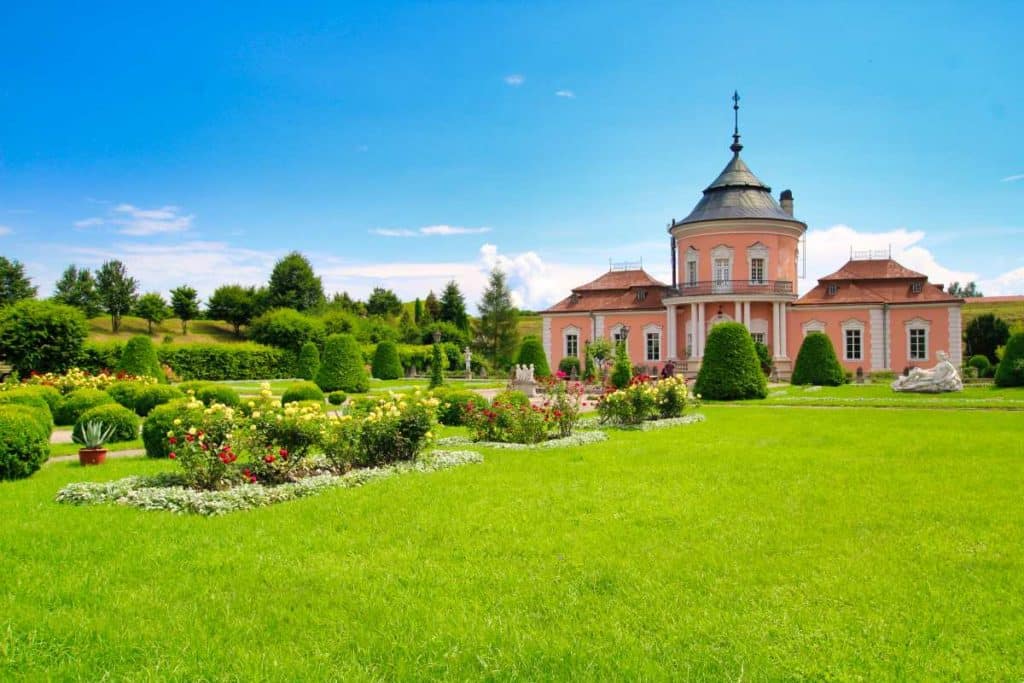
You should not miss the wonderful Japanese Palace. Here you can admire an exhibition of Middle Eastern and Far Eastern art.
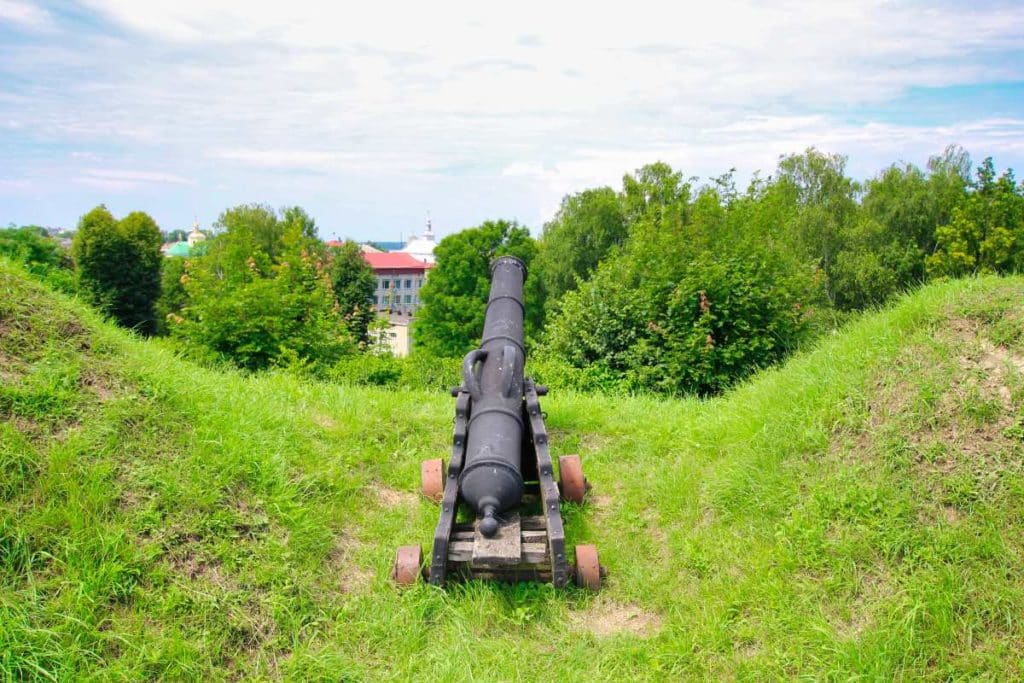
Afterwards, you should definitely climb the former bastions. From there you have the best view of the complex.
Tours through the Golden Horseshoe
The castles can be easily explored during a day trip. We recommend the provider Lviv Buddy which is run by our co-author Peter. It will reliably take you from Lviv to the three castles and experienced guides will lead you through the three complexes. Pick-up at the hotel is included, and you can also book a premium package that includes lunch. Lviv Buddy also offers exciting city tours and walks through Jewish Lviv.
Book recommendations
This travel guide shows you Ukraine in all of its beauty and of course also covers Western Ukraine.
No products found.
An essential book, if you want to learn more about Ukraine’s troubled past
This guide leads you to the Carpathians and presents this diverese area with its many ethnic minorities.
No products found.


